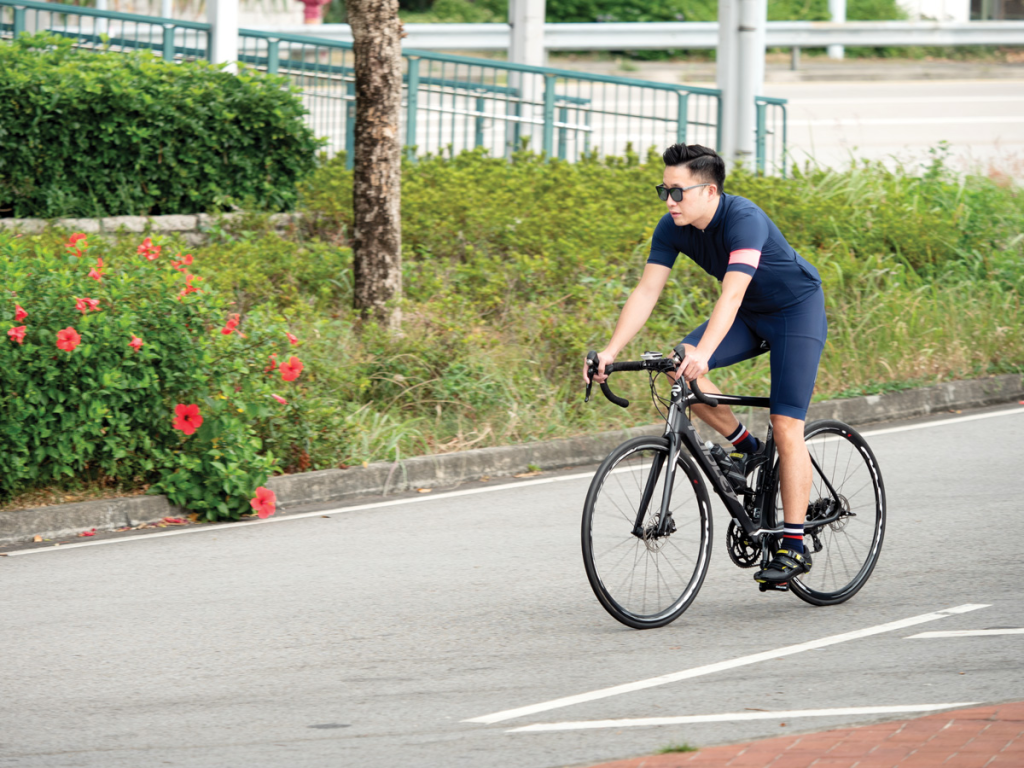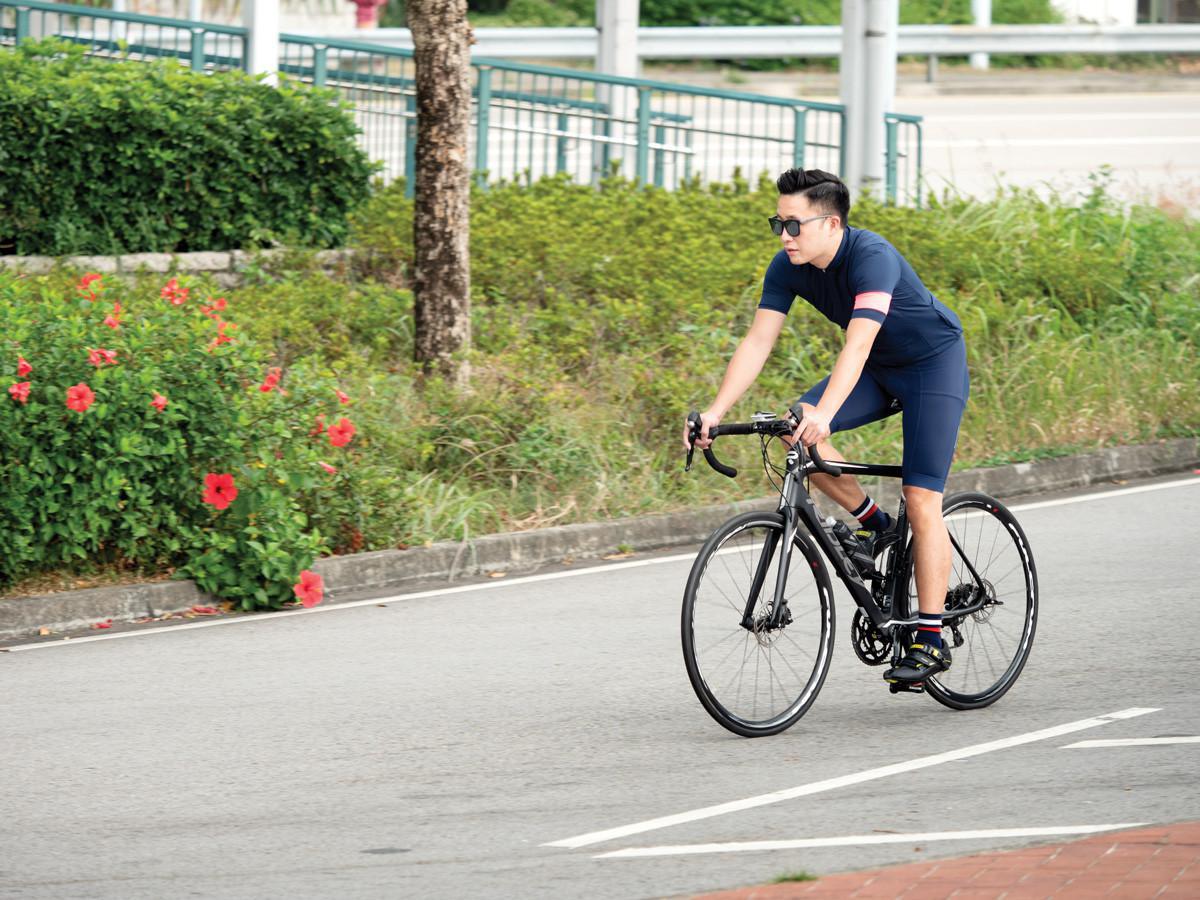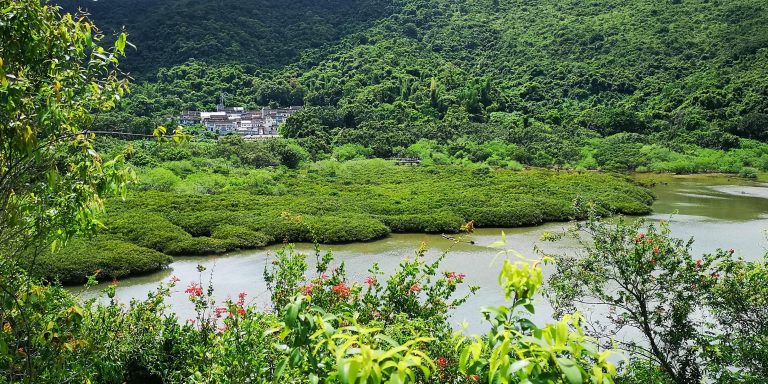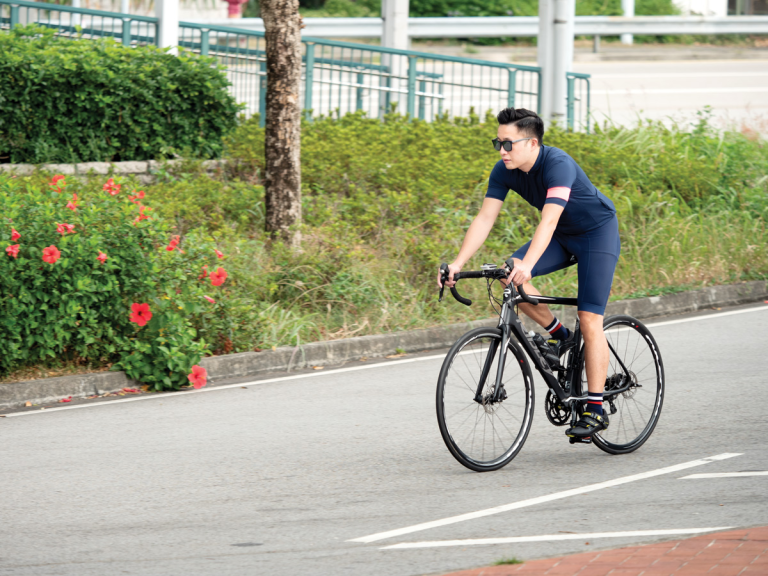A hectic travel schedule left Dave Li little time to exercise, leading him to pack on the pounds over the years. But after one weekend ride things changed, and cycling became more than just a hobby for him.
With health as the main reason for taking up the activity, many CPAs have moved onto competitive cycling or joined cycling interest groups to meet fellow riders. To them, the sport is addictive. With Hong Kong’s scenic cycling paths and strenuous uphill roads, more people are opting for a bike and helmet over running shoes.
For Li, Senior Vice President of Finance at Trinity Limited, cycling relieves the stress of work, and is a fun way to exercise. “I started because I wanted to lose weight,” he says. He got into the sport just two years ago after his friend, a fellow cyclist, invited him to cycle with him one Saturday morning. He enjoyed it so much, that he ended up purchasing his own road bike shortly after, and made it a habit to wake up early on the weekends to train.
Dave Li wakes up early on weekends to cycle from Tsuen Wan to Sunny Bay.
While he enjoys riding solo, Li says group cycling is more intense, and pushes him – and his toughened legs – to pedal harder. “We maintain an average speed of 25 to 30 kilometres an hour and ride much longer distances, sometimes up to 100 km in the mornings,” he says. “You might not have the motivation to complete that distance by yourself.”
By employing a technique known as drafting, he cycles further yet uses less energy. Road cyclists who race at high speeds leave a trail of low pressure, reducing the amount of wind for those behind. Cyclists in a group who maintain a formation by taking turns leading through regularly overtaking one another deal with less wind resistance and can use up to 40 percent less energy than an individual cyclist. “You need to keep up with the rest, because once you fall behind it’s hard to keep up,” Li says. “So that motivates me to keep up my pace.”
To cycle at these speeds, Li says road cyclists steer away from designated cycling paths to avoid putting other cyclists such as children or the elderly in danger. They must ride directly in front of other vehicles. Doing so is risky and, as Li explains, must be done one way.
“Non-cyclists probably don’t realize that Hong Kong is a great place to cycle.”
“Riding on the side of the road is dangerous, as there can be sections with many trucks,” he says. “We might crash into them, or they might crash into us.” He learned this the hard way one foggy afternoon. “While I was riding on Castle Peak Road, a car’s side mirror hit me, and I fell to the ground,” he recalls. “I was alone at that time, so it was quite scary – but luckily the car wasn’t going too fast, so I wasn’t seriously hurt.”
Undeterred by the incident, he still trains on that road, and has spent the better part of the last two years exploring the city’s most scenic routes. “Non-cyclists probably don’t realize that Hong Kong is a great place to cycle,” he says, adding that his personal favourite path is from Sai Kung to Hoi Ha Beach as he enjoys the sweeping green mountains and vistas through the country park.
He has lost 7 kilos since starting, and has no plans to stop anytime soon. Along with his friends, Li started a cycling interest Facebook group, and looks forward to creating a close-knit community of passionate cyclists. “We want people to cycle with us on a casual basis.”
Tang Ah-fai at his bike shop in Yuen Long.
New views
The city’s lesser-known, picturesque landscapes in the western New Territories mean a huge deal for Tang Ah-Fai. He not only lives in Yuen Long, but he also owns a bike shop there. At first, opening up shop close to his home was a challenge. But after finding out that his cousin, a district councillor, had moved out of his office in the area, Tang jumped at the opportunity.
It took two months and just under HK$20,000 to decorate, paint, and convert the once plain-looking office into a vibrant bike store. He opened shop in March 2016 – much to the surprise of his friends and family. “I signed the contract for the shop before telling my wife. I was sure she would say no,” he laughs. “After finding out, she said if I didn’t make a profit in six months, I’d have to close the shop.” With pressure from his family and own expectations riding on his new bike shop venture, Tang was determined to make a profit from selling and renting bicycles to customers.
With business going well, he planned on expanding his business. But a year after opening, green bicycles starting popping up around the town in the hundreds. Hong Kong bike-sharing company Gobee.Bike expanded their reach into the area, attracting many residents with its competitive pricing and convenience to ride using their fluorescent green bikes.
“With my shop, I hope to pass the message on to everyone that cycling is good for your health.”
With Tang’s business, and other bike shops in the area facing similar jeopardy, Tang went back to the drawing board. “My rental business was affected, so instead of renting out individual bikes, I started offering bike tours around the western New Territories.” Knowing that no other bike shops offered such a service, Tang worked steadfastly to bring his idea to life. “I redesigned my website and advertised a bike tour service.”
By having a bicycle tour of the area’s most idyllic viewpoints and historical monuments, customers began to approach Tang.
One of Tang’s favourite stops on his bike tour is Ha Pak Nai, a mudbank and wetland area surrounded by mountain ranges. Located at the westernmost section of the New Territories, visitors regularly venture out to marvel at the sunset. Also part of the tour is Nam Sang Wai Wetland and Tsim Bei Tsui, stopping points for migratory birds, as well as historical monuments such as Ping Shan Pagoda, Tang Ancestral Hall, and Ling To Monastery. “All these places are important to me because I grew up in this area,” he says.
Tang Ah-fai still keeps his first ever bicycle
Organizing and bringing out groups of 10-15 cyclists on the weekends keeps Tang busy and fulfilled. “I am happiest when overseas customers tell me how much they enjoy seeing the historical monuments and beautiful scenery. They now have good memories of Hong Kong.”
The main reason he opened his own bike shop is not lost on Tang. “Many people dedicate their lives to making money and ignore their health,” he says. “With my shop, I hope to pass the message on to everyone that cycling is good for your health.” Though busy at work, Tang says his new job has freed up a lot of time for him to continue his one true passion for cycling. “I live a few kilometres away, so I ride my bike to and from my shop in the mornings or after closing in the evening. I can exercise anytime now.” Getting into the sport as a young boy, he says there is one particular bike in his shop that is most special. “When I was 11 or 12, my dad bought me my first bike which was really important to me – in fact, I still have that bike today! It is over 40 years old,” he smiles. Tang looks forward to expanding his shop’s services online and also, to taking part in more cycling events and gatherings. “I want to form a team of CPA cyclists to train, and also join the Cyclothon together!”
 Dennis Ko finished this year’s Hong Kong Cyclothon in one hour and 12 minutes
Dennis Ko finished this year’s Hong Kong Cyclothon in one hour and 12 minutes
State of mind
With his Hong Kong Cyclothon certificate on display, Dennis Ko smiles and speaks eloquently about his experience. Finishing his second Hong Kong Cyclothon last month, he mentions that getting through a 30-kilometre dash requires tough legs, but an even tougher mind.
Already a keen runner and dragon boat rower, his first brush with competitive cycling was in 2009 while training for his first triathlon, the Hong Kong ITU Triathlon Asian Cup. He didn’t consider taking it further until a co-worker brought it up years later. “I had a colleague who was crazy about cycling, and he invited me to join,” he recalls. Convinced, Ko put his name down, hired a cycling coach, and began training soon after.
Ko, who is the owner of a business advisory company specializing in family-owned companies, dedicated two months of vigorous training to get himself in shape. Finishing 80 km over two days every week, he regularly works up a sweat in Kowloon and on Shek Kip Mei’s uphill roads. With his coach, Ko learned the essentials such as switching gears on different inclines and having good posture. But he says his coach also emphasized having the strength to overcome mental obstacles, such as the fear of injury due to riding at high speeds. “There was very heavy rain during the race and low visibility, so I couldn’t see that much in front of me,” he says, remembering his first Cyclothon experience in 2016. With his feet locked into his biking pedals, Ko knew there was no room to hesitate, and that he had to maintain his speed despite the slippery conditions and rain pelting on his face. “Since there were no cars on the road, I just relaxed and kept on cycling,” he says. “And while I was going down the highway, it felt like I was flying through in the air. I look back, and really enjoy that feeling of freedom.”
“Know your level of fitness and don’t push yourself too much. Just remember what you have practiced.”
The correct breathing technique, combined with good pacing also plays a part in finishing a race, he says. “Try to take deeper and more rapid breaths, especially when you cycle behind other cyclists,” he says. “Save your energy until near the end.” Ko used this technique in last month’s Cyclothon. “I remember going quite fast during the last 5 km. I was speeding down the road as I only used my brakes once.”
Tempting as it is to slow down in danger, cyclists like Ko have trained themselves to overcome that fear of skidding and falling, and continue to use it to their advantage. “You really need the guts to go downhill fast,” he says. “I was trained to not use the brakes when going downhill. You need to increase as much speed as possible.” Ko adds that staying focused on the race at hand is the best way forward. “Don’t focus on cyclists who are faster than you,” he adds. “Know your level of fitness and don’t push yourself too much. Just remember what you have practiced.”
With this year’s Cyclothon done, Ko is busy training for the next triathlon, and when he isn’t cycling, he’s still moving. “I actually run every Thursday with my friends from secondary school – we run for about 45 minutes,” he says. “We’ve been doing this every Thursday for the last 30 years.”
According to a 2017 study by The Education University of Hong Kong, of the 12.3 million commuting trips made daily, only 0.5 percent are made by bike. Of that percentage, 97 percent of cycling commuting occurs in the New Territories.















